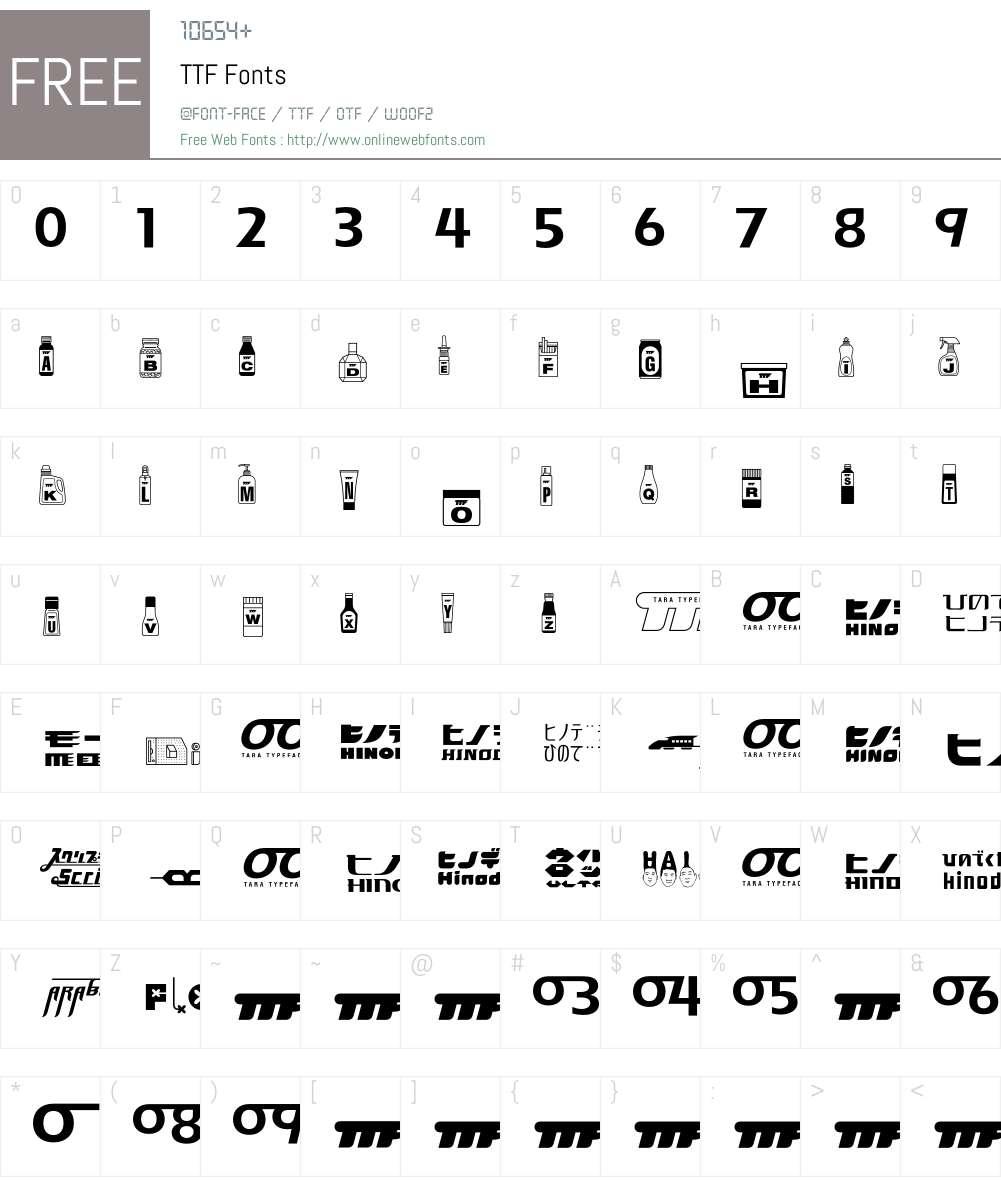

- Mjml ttf font install#
- Mjml ttf font update#
- Mjml ttf font full#
- Mjml ttf font code#
- Mjml ttf font download#
Options for html minifier, see mjml-cli documentation for more info Preserve some tags when inlining css, see mjml-cli documentation for more info Watches the changes made to (file or folder) The outputs first line contains the file in the format Writes the output to stdout without an comment containing the source file in the first line You can pass optional arguments to the CLI and combine them.

Command line interfaceĬompiles the file and outputs the HTML generated in output.html mjml input.mjml -o output.html Sublime Text plugin (MJML needs to be installed separately)įor more information, check the Tooling section.įor more tools, check the Community page.Atom plugin (MJML needs to be installed separately).
Mjml ttf font code#
Mjml ttf font install#
Usage Onlineĭon't want to install anything? Use the free online editor! You can also run yarn build:watch to rebuild the package as you code.
Mjml ttf font download#
To work on MJML, make changes and create merge requests, download and Head over to Usage for other ways to use MJML. You can install MJML with NPM to use it with NodeJS or the Command Line Interface.
Mjml ttf font update#
Email clients update their specs and requirements regularly, but we geek about that stuff - we’ll stay on top of it so you can spend less time reading up on latest email client updates and more time designing beautiful email. The abstraction it offers guarantee you to always be up-to-date with the industry practices and responsive. MJML has been designed with responsiveness in mind. Building a responsive email is super easy with tags such as and. Say goodbye to endless HTML table nesting or email client specific CSS. Get your speed and productivity boosted with MJML’s semantic syntax. MJML rolls up all of what Mailjet has learned about HTML email design over the past few years and abstracts the whole layer of complexity related to responsive email design. MJML’s open-source engine generates high quality responsive HTML compliant with best practices.

Its semantic syntax makes it easy and straightforward and its rich standard components library speeds up your development time and lightens your email codebase. Jonathan Neal offers an alternative method where system fonts are declared using benefit here is that you can declare the fonts once and then that becomes the thing you can on the font-family property instead of the long list of fonts each and every time.MJML is a markup language designed to reduce the pain of coding a responsive email.
Mjml ttf font full#
The limitation of the first method is that you have to call the full stack of fonts each time it’s used on an element and that can get cumbersome and bloat your code, depending on where and how it’s used. published a thorough write-up on the warnings it generates due to the leading font appearing to be a vendor prefix. Note: This method should only be used on the font-family property instead of the font shorthand. This snippet also drops support for certain types of emoji and symbols: /* System Fonts as used by Medium and WordPress */įont-family: -apple-system,BlinkMacSystemFont,"Segoe UI",Roboto,Oxygen-Sans,Ubuntu,Cantarell,"Helvetica Neue",sans-serif GitHub uses this method on their site, applying system fonts on the body element: /* System Fonts as used by GitHub */įont-family: -apple-system, BlinkMacSystemFont, "Segoe UI", Roboto, Helvetica, Arial, sans-serif, "Apple Color Emoji", "Segoe UI Emoji", "Segoe UI Symbol" īoth Medium and the WordPress admin use a similar approach, with a slight variation, most notably support for Oxygen Sans (created for the GNU+Linux operating system) and Cantarell (created for the GNOME operating system). One method for applying system fonts is by directly calling them on an element using the font-family property. Method 1: System Fonts at the Element LevelĬhrome and Safari have recently shipped “system-ui” which is a generic font family that can be used in place of “-apple-system” and “BlinkMacSystemFont” in the following examples. Additionally, it helps show that with new system versions, come new fonts, and thus the possibility of needing to update your font stack. The reason for the preface is that it shows how deep you may need to go back to support system fonts. What are those system fonts? At the time of this writing, it breaks down as follows: The beauty of “system” fonts is that it matches what the current OS uses, so it can be a comfortable look. That’s true of any “web safe” font, though. Defaulting to the system font of a particular operating system can boost performance because the browser doesn’t have to download any font files, it’s using one it already had.


 0 kommentar(er)
0 kommentar(er)
